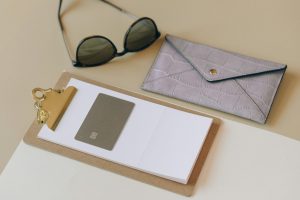Redefining Retail Therapy: Shopping for Joy, Not Just Stuff
In today’s society, retail therapy has become a popular means of seeking temporary relief from stress, anxiety, and other negative emotions. However, the traditional concept of retail therapy solely revolves around purchasing material possessions to fill a void, rather than finding true happiness and joy. In this fast-paced consumerist culture, it’s time to redefine retail therapy and shift our focus from just buying stuff to shopping for joy. Let’s explore how retail therapy can be a tool for self-discovery and emotional fulfillment, rather than just a fleeting moment of happiness.
Understanding Retail Therapy
To fully comprehend the concept of retail therapy, we must first understand the psychology behind it. It is a form of emotional coping mechanism where individuals use shopping as a means to regulate their emotions and distract themselves from negative thoughts or feelings. It offers a sense of control and comfort, and the act of purchasing can release dopamine, a neurotransmitter associated with pleasure and reward, in our brains.
However, this temporary relief often leads to an addictive cycle of constantly seeking the next purchase to feel good, resulting in overspending and accumulating unnecessary items. This is where the concept of retail therapy starts to lose its purpose and becomes damaging to our mental and financial well-being.
Shifting the Focus to Joy and Fulfillment
Instead of using retail therapy as a temporary fix, we can redefine it as a way to find joy and fulfillment in our lives. The key is to become mindful shoppers and dig deeper into our emotions when making a purchase. It’s about understanding our true wants and needs and finding ways to fulfill them without solely relying on material possessions.
One way to do this is by practicing gratitude and appreciating what we already have. When we stop comparing ourselves to others and focus on the positives in our lives, we begin to shift our mindset from constantly wanting to always striving for more. This can lead to a decrease in impulsive purchases and a more intentional shopping experience.
Shopping with Purpose
A great approach to redefine retail therapy is to shop with a purpose. This means being intentional about our purchases and considering the impact they have on our lives and the environment. Instead of buying the latest trend or the next best thing, we can choose to shop ethically, supporting brands that align with our values and beliefs. This not only brings joy to our lives but also contributes to making a positive impact on the world.
Moreover, retail therapy can also be a means of self-discovery and personal growth. By understanding our motivations and triggers behind our shopping habits, we can explore healthier ways to cope with our emotions. This could include practicing self-care, spending quality time with loved ones, or engaging in a hobby. These fulfilling activities can bring long-lasting joy and contentment, unlike the temporary high of retail therapy.
The Role of Mindfulness in Retail Therapy
Mindfulness, which is the practice of being present and fully engaged in the moment, can greatly enhance our retail therapy experience. By being mindful, we become more aware of our feelings and thoughts when making a purchase. We can ask ourselves why we want to buy something and if it will truly bring us joy and satisfaction. This can help prevent impulsive buying and lead to more conscious and fulfilling purchases.
Practicing Moderation and Balance
As with anything, moderation and balance are crucial when it comes to retail therapy. It’s essential to find a healthy balance between using shopping as a form of temporary relief and finding genuine joy and fulfillment in our purchases. It’s also vital to practice moderation and not rely on retail therapy as the sole means of managing our emotions. By establishing a healthy relationship with retail therapy, we can harness its potential for positive growth and self-discovery.
In Conclusion
Retail therapy has become a societal norm, but it’s time to redefine its purpose beyond just buying stuff. We can make a conscious effort to shift our mindset and focus on shopping for joy and fulfillment rather than just seeking temporary relief. By understanding our emotions, practicing gratitude and mindfulness, and shopping with purpose, we can rediscover the true essence of retail therapy. Let’s redefine retail therapy as a tool for self-discovery and emotional fulfillment, rather than just a means of filling our closets with stuff.











